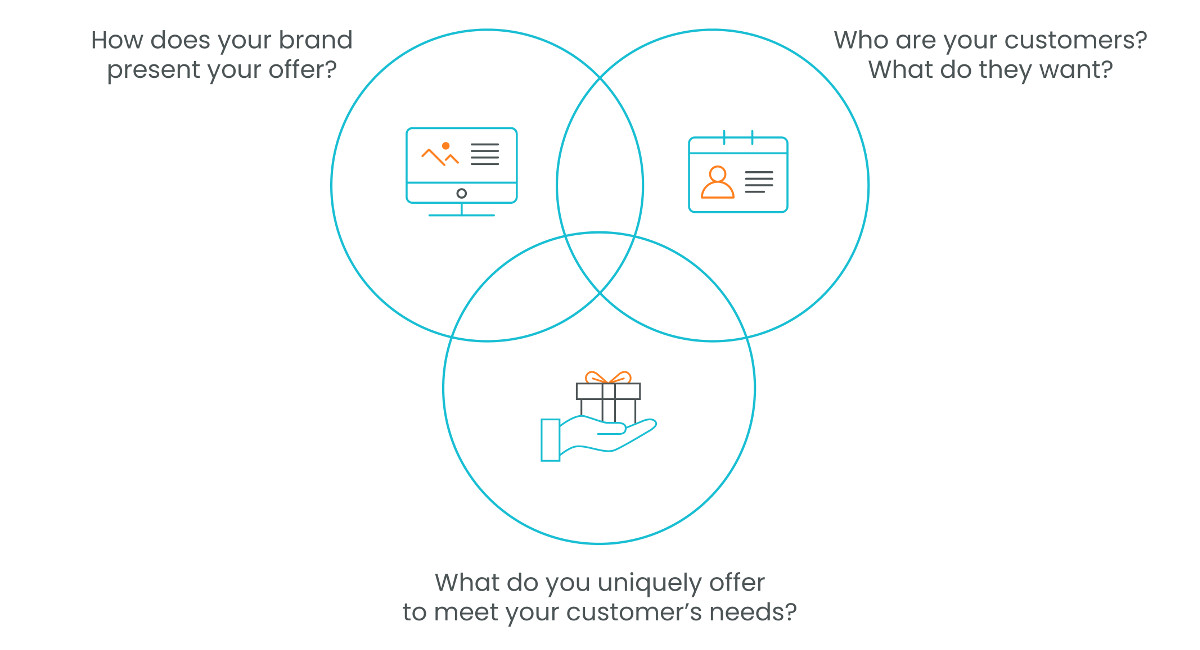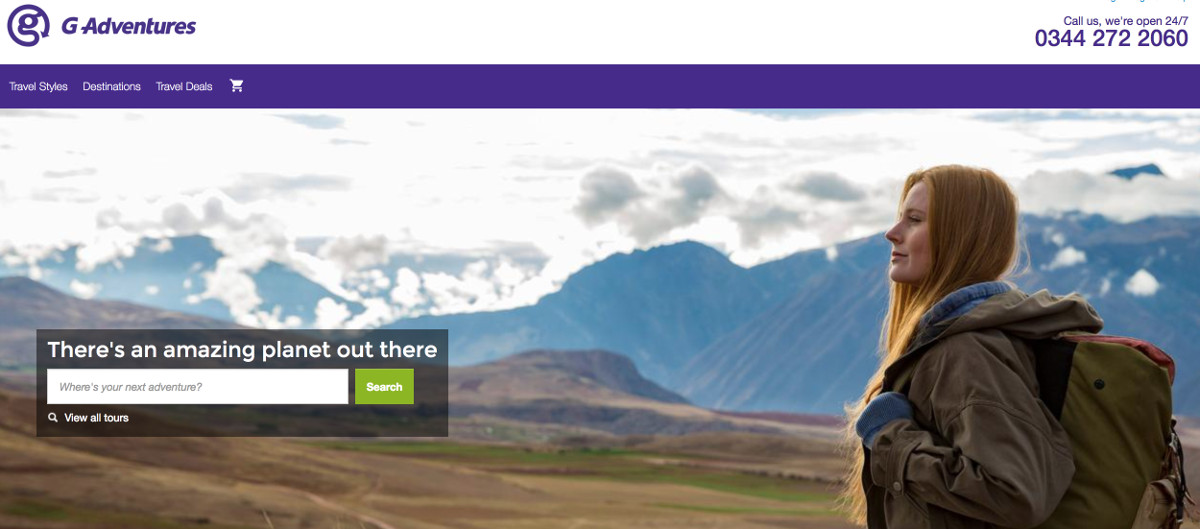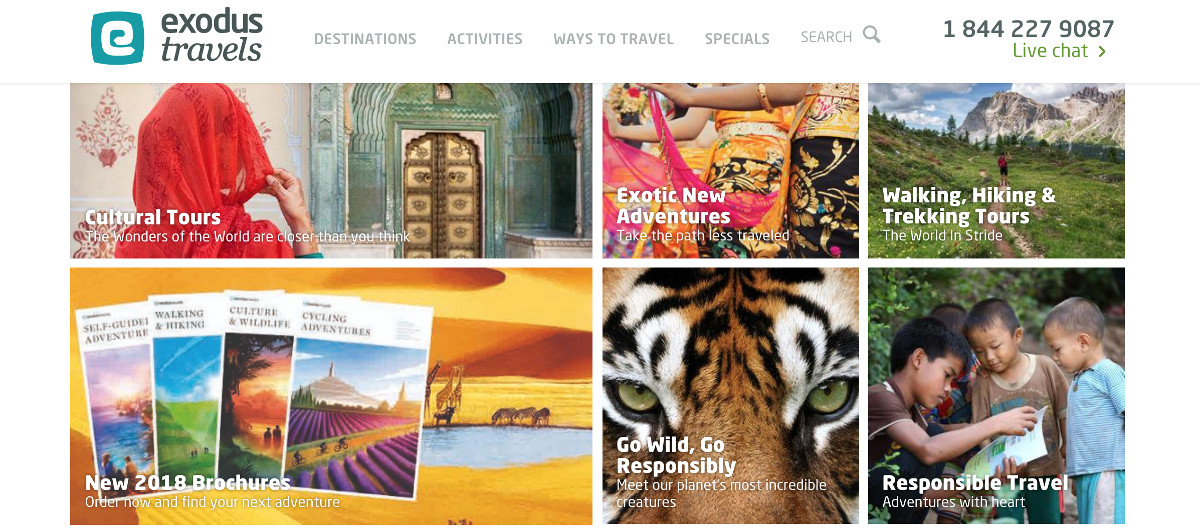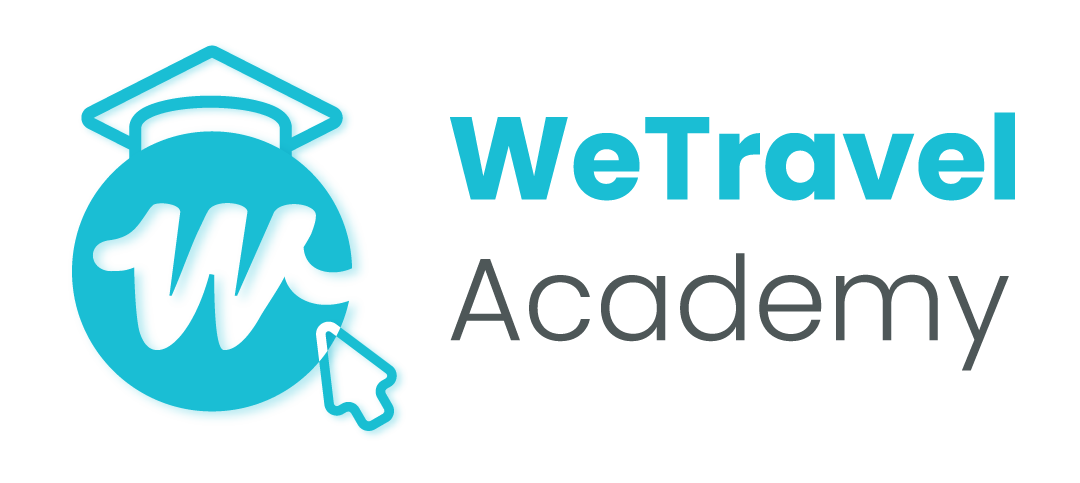How To Supercharge Your Travel Brand With A Killer Value Proposition
If someone were to stop and ask you what your travel company does differently to your competitors, could you answer them quickly?
If so, then that’s your value proposition.
Put simply, a value proposition is the value you deliver to customers. It’s the reason they buy from you and not from your competition.
Developing a winning proposition is all about understanding your target market and its needs, and then developing your offer in such a way that it meets those needs perfectly.
Your brand is the way you bring your proposition to life.
In this article we explore how a small travel operator can refine and improve their value proposition by answering the following questions.

By the end of the article you will know:
1. What a great value proposition is, why it is important for your business and how to develop one for your company.
2. How to define your target audience and unique selling point to increase sales.
3. How to bring your brand to life and ensure it is memorable for customers.
Reading Time: 14 Minutes
Who are your customers and what are their needs?
When setting up their company, many small tour operators make the same mistake - they try to cater for all types of customers and needs.
But in doing so they fail to deliver perfectly for any one customer set.
To start winning lots of new customers it is absolutely vital to be able to identify who your ideal customers are and what they want.
- Are they couples, students or families?
- How old are they? Are they young professionals, retired people, people in their 20s or 50s?
- What kind of tour do they want: budget, mid-range or luxury?
- Would they be more comfortable travelling in small groups, large groups or privately?
The more you define your ideal customers, the easier it gets to know what they want and what you can uniquely offer them.
Look at the travel giants, like G Adventures or Audley Travel.
What you can learn from these successful mega-companies is not hidden in their fancy websites or brochures. But instead is found in their very clear understanding of who their ideal customers are.

In terms of G Adventures, they have honed their offer for group adventure tours targeting 20 and 30-something adventure-seekers.
If they didn’t know that their customers were budget-savvy travelers who love adventure and enjoy traveling in small groups, they would get their product offer and pitch completely wrong.

Audley Travel is perhaps even clearer. They put their proposition front and center, next to their brand: “Tailor-made journeys for the discerning traveller”.
If Audley didn’t know that their main customers were couples in their 50s and 60s with lots of disposable income and lists of unique requirements, they might have ended up offering group trips with no frills.
A great value proposition starts with a clear understanding of your target audience and its needs.
QUICK EXERCISE
You might already have a good idea of who your ideal customers are and what they want. But it’s always worth re-evaluating your assumptions.
Take a few minutes to think about your ideal customer. Use the questions below to guide you.
- Age (How old are they?)
- Location (Where do they live?)
- Status (Are they married or single?)
- Do they have families or not?
- Are they students, young professionals, retirees?
- Travel experience (Are they solo travellers? Do they prefer group trips or private trips? Are they looking for cultural experiences, adventure or relaxation?)
- Budget (Are they looking for budget options, mid-range, luxury or private tailor-made?)
Try to define your ideal customers and their needs in as much detail as possible. The aim is to get one overarching customer profile. If you find that your customer profile is too broad (i.e. 20-year-olds who are budget savvy, as well as private tailor-made customers with lots to spend), then you need to niche down further.
You may find that you have multiple ideal customer profiles. That’s fine as long as there is an overarching thread, like budget, age or travel experience, that links them. In the next section we will look at how you can refine your offer to uniquely cater for customer segments.
What do you uniquely offer to meet your customer’s needs?
Travel, as opposed to a physical product, is all about the experience.
This is great on one level, as experiences can take on so many different forms that finding a unique positioning is actually quite straightforward. But on the flip side, experiences are very subjective, and therefore meeting your customers' needs and desires can be a little daunting.
As a tour operator, it is vital that your tour offerings are clearly articulated and honestly brought to life, so that you can consistently hit the mark and meet customer expectations.
Large tour operators are very good at this.
For example, look how Exodus Travels captures customers with provocative imagery and directs them to detailed resources on how the company delivers its service.

To avoid any pitfalls, here are two key areas to focus on.
Unique Selling Point (USP)
It’s an overused phrase, but the idea of Unique Selling Point, or USP, is helpful in thinking about how you differentiate your tour operation from competitors.
For many tour operators, this can be a scary thing to think about. But it needn’t be.
Here is a quick exercise to help you formulate your USP.
QUICK EXERCISE
Take a minute and think about all the assets in your business - your staff, your brand, your industry and country knowledge, your values, your partners. All of these assets will be uniquely different to your competitors and difficult to copy.
Each asset in your business will have unique strengths and weaknesses. Note your strengths and focus on these to develop your unique offer.
For example, if your employees are amazingly skilled and knowledgeable in tour leading, make them the USP of your tours.
If a strong partnership with local suppliers is your area of strength, make this a key part of your USP.
If your green credentials and sustainable tourism values are key to your service, make this message front and center in your tours.
Pro Tip: Seldom is price a good strategy for a USP, as it usually results in a race to the bottom, very tight margins, commoditization and ultimately - bad service.
The trick to a great USP is to focus on your business assets and organise them by strength in such a way that your service offerings (your tours) are uniquely delivered.
Specialism
Most small tour operators only focus on one or two types of activities in one or two countries.
A narrow focus is great as it is a lot easier to demonstrate a specialism when you only offer a few types of tours.
However, many small tour operators are not great at showing off their specialist knowledge.
To demonstrate specialism you need to:
- Provide deep and relevant information on your website, in your trip dossiers and in your email communications with customers. We go into more detail on this in our Content Marketing article.
- Train your staff members on all the intricacies of your tours, so that they can talk with passion and integrity to customers.
On the surface, big tour operators are great at both these points, but if you dig a little deeper, they are often found wanting in terms of local knowledge. This is where small tour operators can shine.
Here’s a major brand showing off its specialist expert knowledge, but we suspect many small operators have better local expertise!

Don’t be shy to demonstrate the depth of your specialist experience and knowledge.
QUICK EXERCISE
Now that you have clearly defined your target audience and what you uniquely offer, it’s time to crystalize that into a value proposition.
Remember the question at the beginning of this article?
If someone were to stop and ask you, what your travel company does differently to your competitors, could you answer them quickly?
You should now be able to answer that confidently.
Write down your answer and then refine it into a proposition statement. This statement can be as short or as long as you like. You could use it as a slogan on your website, or only use it internally as an organising intelligence for how and why your company does things the way it does. But it needs to be front and center of your travel business.
Examples: Trafalgar Tours: We bring you the good life; Audley Travel: Taylor-made journeys for the discerning traveller; Intrepid Travel: Real life experiences
How does your brand dramatize your offer?
So, you have figured out who your customers are and what they want that you can uniquely offer them.
Now you need to bring it to life through your brand.
Your company brand is what communicates your value. Does your brochure look expensive? Does your website look professional? Do your employees look smart in their branded uniforms?
All these questions may seem like minor points, but taken together they say a lot about your company and what you uniquely have to offer customers.
To build a great brand you need to be:
- Clear
- Consistent
- Memorable
What is the first thing you notice when you meet someone new?
Their physical appearance, of course. How they present themselves; what clothes they are wearing; their smile, hair and eyes.
Brands are exactly the same. The first time a customer interacts with a brand they very quickly make a subconscious assessment of your company based on its visual representation - your logo, website, brochures, social media pages and other branded materials.
Many small tour operators don’t pay enough attention to their brand and therefore end up appearing unprofessional or sending mixed signals on who they are and what they offer.
If you feel you may have neglected your brand and want some ideas for a refresh, take a moment to complete this exercise.
QUICK EXERCISE
Think of what your brand represents and how would you like to be perceived. This should align perfectly with your value proposition.
Use adjectives to describe your brand. For example: fun, adventurous, funky, young, tailor-made, sustainable, bespoke, luxurious, professional, etc.
Now think of the current visual representations of your brand - your logo, website, sales brochures, etc. Do these accurately capture what you represent?
If not, it’s time for a refresh. Follow the top tips below to refresh your brand.
Brand Guidelines
As a brand develops, it is easy for different colors, logos and fonts to appear with no apparent consistency. Developing brand guidelines is a great way to remain clear, consistent and memorable. Your brand guidelines should cover:
- Brand color palette: These are the 4-5 colors that represent your brand. Note the hex code (for example, #ffffff) of these colors and never allow yourself to use any other colors in your branded materials.
- Logo: If your logo looks dated its time for a new one. Nowadays you can get a new logo designed by a professional designer for a very affordable price via popular sites like People Per Hour, Upwork and Fiverr. Make sure to communicate your brand message and color palette. Get the designer to create a few options and ask friends and family for their comments.
Pro Tip: Once you have settled on a logo make sure to get color versions, as well as black and white, grey and transparent variations that can be used on different backgrounds.
- Fonts: Fonts say a lot about your brand. Make sure you choose one or two standard fonts and sizes that you use consistently throughout your digital and print media. Sharp and stylish fonts like Nevis, Gotham, Proxima Nova seem to be very popular among travel companies. Classic fonts like Times New Roman, Helvetica and Lato also work well.
Here is a screenshot from Abercrombie & Kent, a luxury tailor-made travel operator. Pay attention to the colors, fonts, layout and logo - they all work in perfect harmony and exude luxury.

Visual Representations
Once you have settled on your brand guidelines, it’s time to assess all visual representations of your brand and make updates. Focus on these key areas:
- Website: Your website is your shop window. If it looks dated and doesn’t clearly represent your brand, it’s time for an overhaul. See our Websites Design and Development article.
- Print Media and Brochures: These documents are excellent selling tools, but to make sure you set the right tone with your customers, they should consistently reflect your brand guidelines.
- Social Media: Social media pages are an incredibly important extension of your digital presence. Make sure they live up to your brand in style and tone. See our Facebook Marketing article.
- Email: Email continues to be a major channel for communicating with customers. Make sure your email etiquette stays on brand and your email signatures look the part. See our Email Marketing article.
Brand Values and Culture
Your brand is also closely related to your company culture and values. As part of the value proposition and branding exercises above, it is worthwhile thinking about the values you want your travel company to represent.
Popular company values that you may want to consider are: integrity, fairness, safety, respect, courage, passion, quality and customer service.
QUICK EXERCISE
Try coming up with 3-5 values that align well with your proposition and brand. Remember, for values to be lived and adopted into your company culture, they need to be true!
If integrity is an important value for you, but you don’t treat staff or customers honestly, then this value will undermine your brand.
Summary
We’ve covered a lot of ground in this first article of our 11-part guide on How To Scale Your Tour Operation Internationally. You can continue reading them as separate articles, or download the full guide.
Getting your value proposition, brand and values properly aligned will give you a huge advantage over competitors.
A winning proposition requires a great understanding of your target customer needs, and a relentless focus on refining your offer to meet those needs perfectly. Your brand is how you bring your proposition to life.
In the next article, we look at one of the most important parts of a travel business in the digital age, your website.
Did you enjoy this article? Get a FREE e-book: 150-page guide that covers everything from establishing a winning travel brand to delivering a market-leading service.
New resources, straight to your inbox
We’re committed to your privacy. WeTravel uses the information you provide to us to contact you about our relevant content, products, and services. You may unsubscribe at any time.




